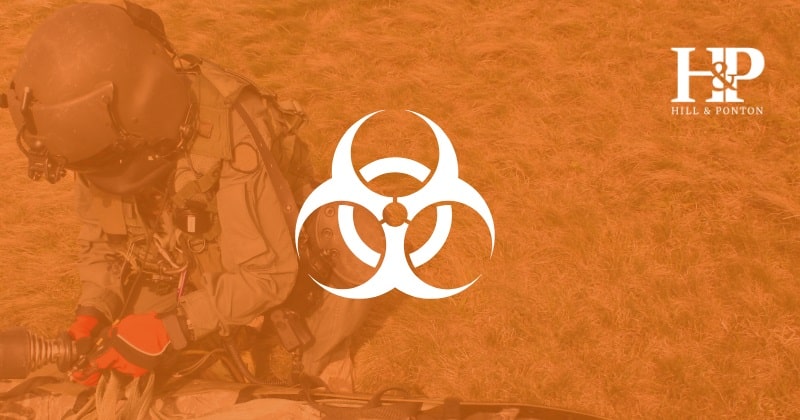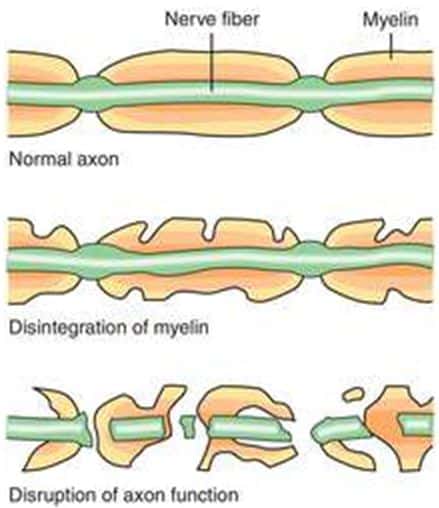In my last post, I wrote about chronic inflammatory demyelinating polyneuropathy (CIDP) and its symptoms, diagnosis, and treatment. The cause of CIDP is unknown. CIDP does not run in families. So why does your immune system decide to attack your nerves? The process by which any autoimmune disease develops is the same – it could be due to an environmental exposure, a genetic anomaly, or some weird virus. Take for example the statistic that 20% of people who get lung cancer never smoked. So how could you get CIDP?
CIDP is closely related to Guillain-Barre syndrome (GBS) and it is considered the chronic counterpart of that acute disease. GBS however, is not a permanent condition and can be treated effectively. In recent months there was a high risk for contracting GBS through the Zika virus transmitted by a mosquito. However, there is still no scientific finding that CIDP is caused by a virus.
There are many supportive studies and medical consensus that toxins, poisons, and chemicals can cause peripheral neuropathy. Exposure can happen through industrial chemicals in the workplace or in the environment. Common toxins that cause neuropathy include exposure to lead, mercury, arsenic, and thallium. Some organic insecticides and solvents can result in neuropathies. Sniffing glue or other toxic compounds can also cause peripheral neuropathy.
A well-known chemical compound, specifically with many Vietnam veterans, is Agent Orange. This is the chemical that the government sprayed to defoliate the jungle during the Vietnam War. In order for a veteran to qualify for presumptive service connection to a list of medical conditions linked to exposure to Agent Orange, they have to have served in Vietnam during a certain time period. Exposure is conceded, on land in Vietnam or on a ship operating on the inland waterways of Vietnam, between January 9, 1962, and May 7, 1975. This includes U.S. Navy and Coast Guard Ships with operations in Vietnam.
But that is not the only place where veterans were exposed to Agent Orange. It was also used along the Korean demilitarized zone. Exposure is conceded along the Korea DMZ between April 1, 1968, and August 31, 1971.
Further, the VA has said that there is possible exposure to crew members to herbicide residue in C-123 airplanes flown after the Vietnam War, and for Blue Water Veterans on open sea ships off the shore of Vietnam during the Vietnam War. Additionally, veterans that were stationed or served near the perimeter of military bases in Thailand between February 28, 1961, and May 7, 1975, should be given consideration to Agent Orange exposure-related diseases.
Diabetes mellitus is one of the presumptive diseases related to Agent Orange exposure. Diabetes is a well-known cause of peripheral neuropathy. There are also many other conditions where neuropathy develops as a comorbidity to that condition. In other words, neuropathy is a secondary condition that rises after the primary condition is diagnosed. Early-onset peripheral neuropathy is also a presumptive disease but it has to be shown to manifest within one year of herbicide exposure and it must rise to a 10% rating under the VA’s rating schedule of diseases.
That being said, if a veteran was exposed to Agent Orange and has been diagnosed with neuropathy many years later, but does not have diabetes mellitus, and all other causes have been ruled out, he may indeed have CIDP.
When doctors cannot find a cause or root of the neuropathy, they call the disorder “idiopathic”, which means “of unknown cause.” Because patients may have subtle pain or weakness, it may be difficult to arrive at a specific diagnosis of toxic neuropathy at onset.
The hallmark of the disease is weakness. People have trouble with their activities of daily living. They cannot get off the toilet, stand up out of a chair, or get out of their cars easily. Arm weakness is expressed as inability to hold things, difficulty carrying items, or trouble putting the plates on the shelves. Fine motor skills get impaired. People begin to notice a change in handwriting and they can’t zip up zippers. Women may have difficulty putting on their earrings. After the subtle changes, they start to notice the pain and numbness which can become debilitating.
CIDP is often misdiagnosed as idiopathic peripheral neuropathy. Doctors also delay its diagnosis by associating it with getting old, a patient being deconditioned, spinal stenosis or some other problem.
CIDP is a progressive disease and no cure has been found so far. There are ongoing research studies to determine the cause, treatment, and cure. (See clinicaltrials.gov) CIDP is not an easy case to win at the VA. It is not a presumptive disease associated with Agent Orange exposure. You have to fight to get it service-connected. You will likely need an expert opinion to link the disease to Agent Orange or some other chemical exposure.



